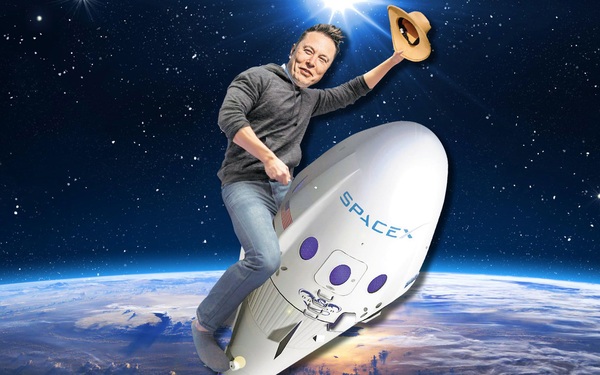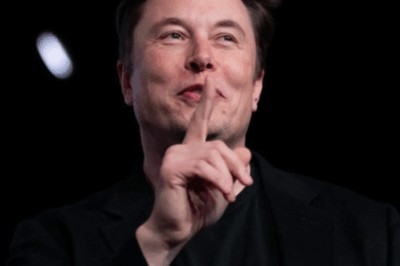Tech billionaire Elon Musk reaffirmed the reason he pursues the journey to bring humans to Mars: to ensure that life does not become extinct when Earth is no longer habitable.

Elon Musk shares his strong belief in expanding life beyond Earth (Photo: SpaceX).
In an interview with host Jesse Watters on Fox News on May 6, billionaire Elon Musk – founder of SpaceX – emphasized that expanding life beyond Earth is not just an option, but a long-term necessity.
According to him, the blue planet we live on will not be able to sustain life forever, because the Sun is gradually heating up and will burn the Earth in the future.
Musk commented: “Eventually, all life on Earth will be destroyed by the Sun. The Sun is gradually expanding, and at some point, we need to become a multi-planetary civilization, because the Earth will be burned up”.
Astronomers have long recognized that the Sun’s evolution will render the planet uninhabitable in about 450 million years, as its increased energy vaporizes the oceans and destroys the atmosphere. And in 5 billion years, when the Sun transitions to a red giant phase, it will engulf the Earth.
The Journey to Mars: From Ideal to Reality

Faced with that prospect, Elon Musk believes that Mars is the most viable option for humanity to expand its footprint in space. “Mars is like life insurance for human civilization,” he said.
The Red Planet is located in the habitable zone of the Solar System, has a day-night cycle similar to Earth’s, and is a more realistic target than other distant planets.
To realize this dream, SpaceX is developing Starship – the largest and most powerful rocket system ever built, with a fully reusable design to reduce launch costs to an acceptable level for interplanetary transport.
Starship is also the main vehicle in the plan to build a colony on Mars – a vision that Musk described as “absolutely achievable this century, if we are determined”.
Despite having conducted eight test flights, including two in 2025, Starship is still in the final stage. Some flights have had problems, with the upper part of the rocket exploding just minutes after leaving the launch pad.
However, SpaceX continues to improve and prepare for its ninth flight, with high expectations of taking a big step forward in the journey to Mars.
What will life on Mars be like?
Settling on Mars is not only a technological breakthrough but also an existential challenge for humanity. To survive, future residents will need to live in self-contained ecological modules where air conditioning, water and food must be continuously recycled.
Technologies such as closed-environment agriculture, indigenous resource extraction (ISRU) such as water ice and CO₂ gas to create oxygen, will play an essential role.
In addition, cosmic radiation, extreme temperatures and low gravity are serious physiological and psychological factors that scientists must address. Elon Musk once envisioned that in the future, “dome cities” on Mars will gradually take shape, paving the way for an autonomous society – the foundation for the first multi-planet civilization in history.
From Elon Musk’s far-sighted vision to SpaceX’s concrete steps, the journey to Mars is no longer a fantasy. It is a strategic plan for humanity to protect itself from the impermanence of the universe, and who knows, in the next few decades, today’s young Vietnamese generations may be the first inhabitants of the Red Planet.
News
Tiger Woods’ son, Charlie Woods, achieves major golf achievement, marking an important milestone in his journey to follow in his father’s footsteps
Tiger Woods’ Son Charlie Woods Earns Major Golf Honor A well-deserved honor for Tiger Woods’ son. ORLANDO, FLORIDA – DECEMBER…
Elon Musk’s fate-deciding meeting of the decade: Either have a chance to become the first trillionaire or leave Tesla forever
Elon Musk’s fate at the Tesla empire will soon be decided. Tesla shareholders could soon give CEO Elon Musk, the…
Niall Horan ‘struggled’ with this aspect of One Direction fame
Though the five One Direction lads looked happy on the outside, they struggled to cope with their drastic rise to fame, which…
Malone continued to gush about his daughter, calling her “f—ing hilarious.
Post Malone Is A Proud Dad, Reflects On Lessons Learned from Raising His 3-Year-Old Daughter And Her Love For George…
Kane Brown shares the results he got after deciding to give up some bad habits!
Kane Brown Quits Tobacco and Alcohol, Drops Over 24 Pounds in Remarkable Health Transformation “Once I realized how tough it…
Lainey Wilson feels like she has “Impostor Syndrome” where the devil always has a way of showing up, wielding his little stick, and stirring things up”
Country Star Lainey Wilson Makes Bold Admission About Her Career: ‘The Devil Has a Way of Coming In’ Lainey Wilson should…
End of content
No more pages to load












